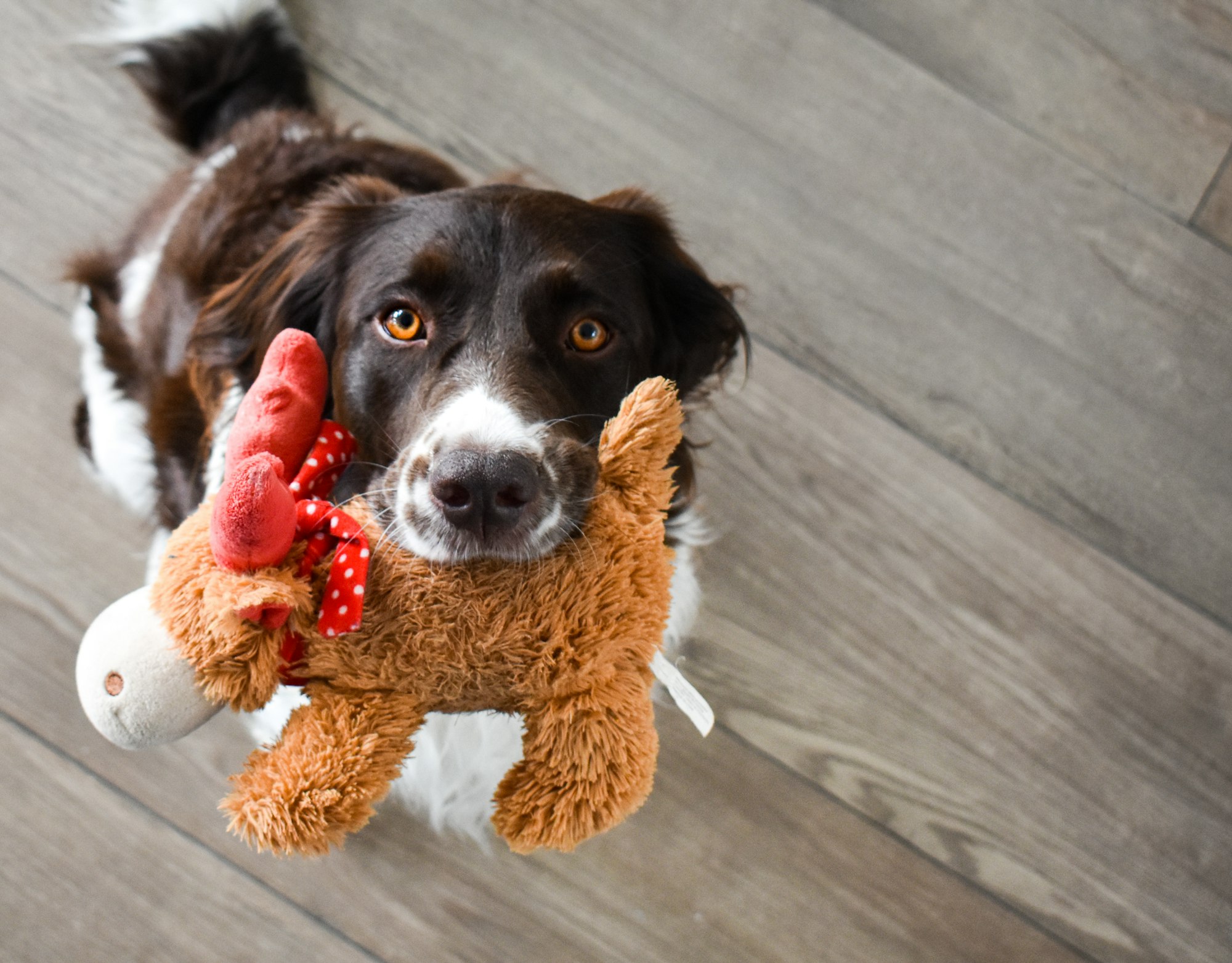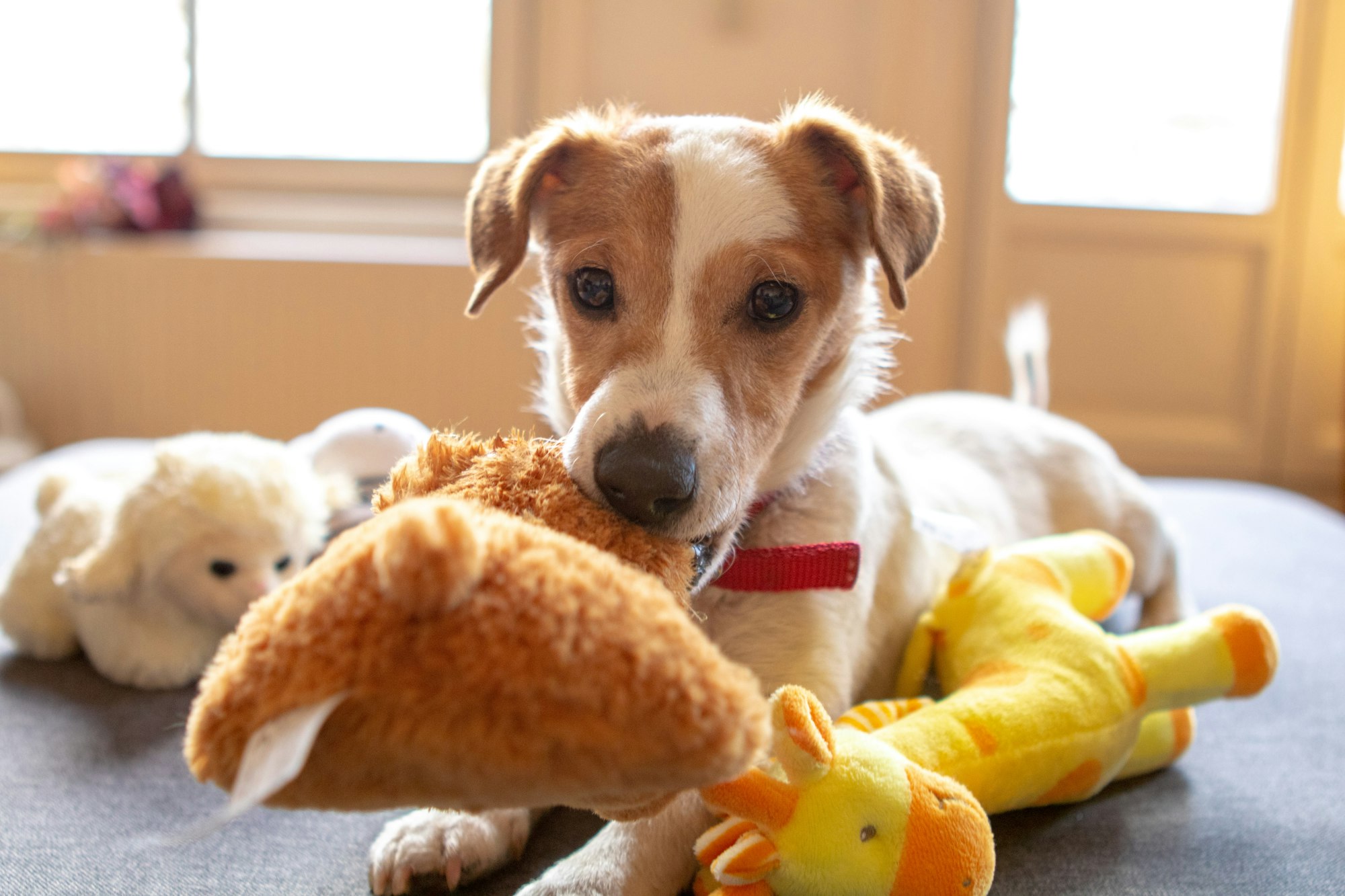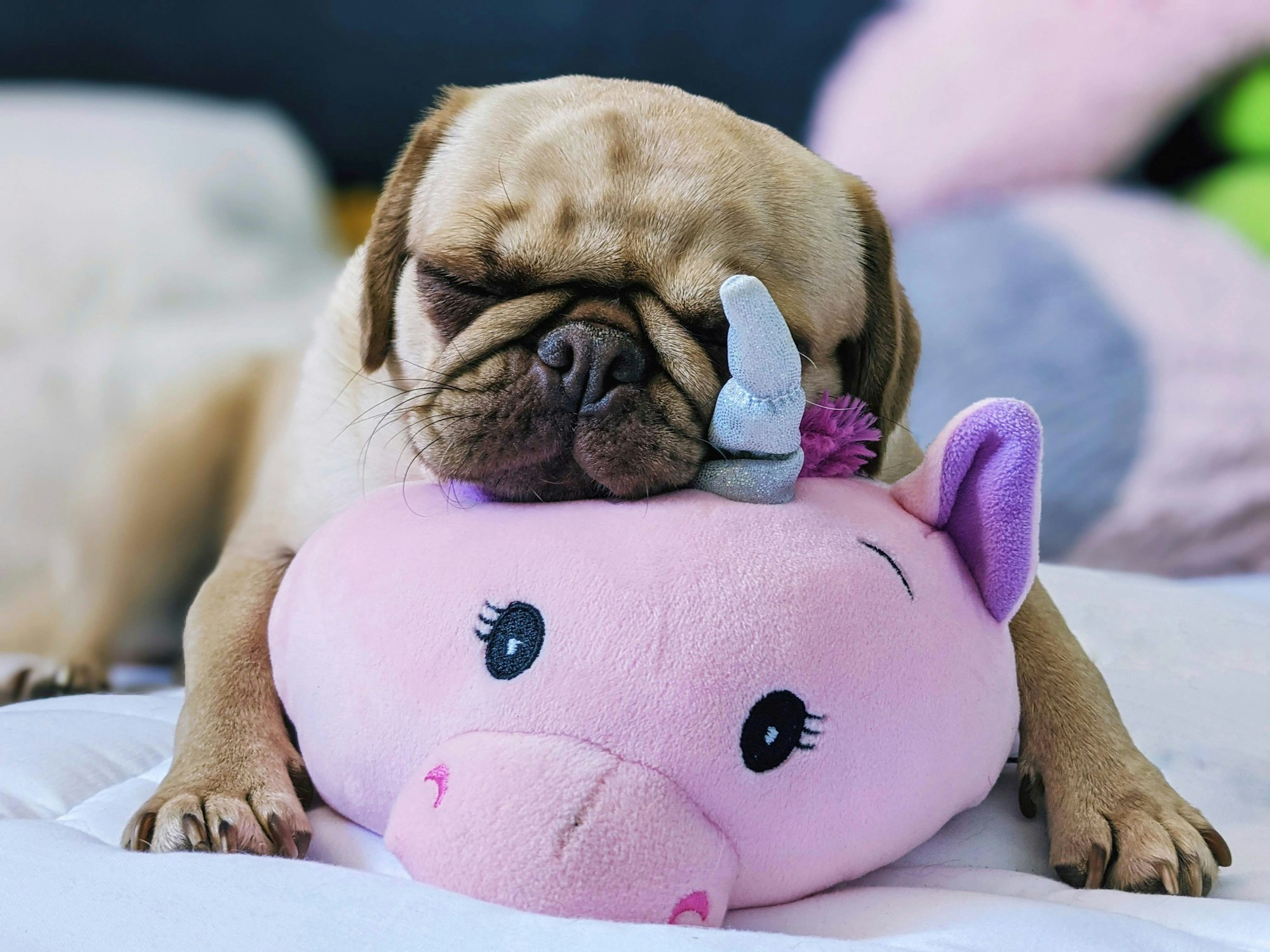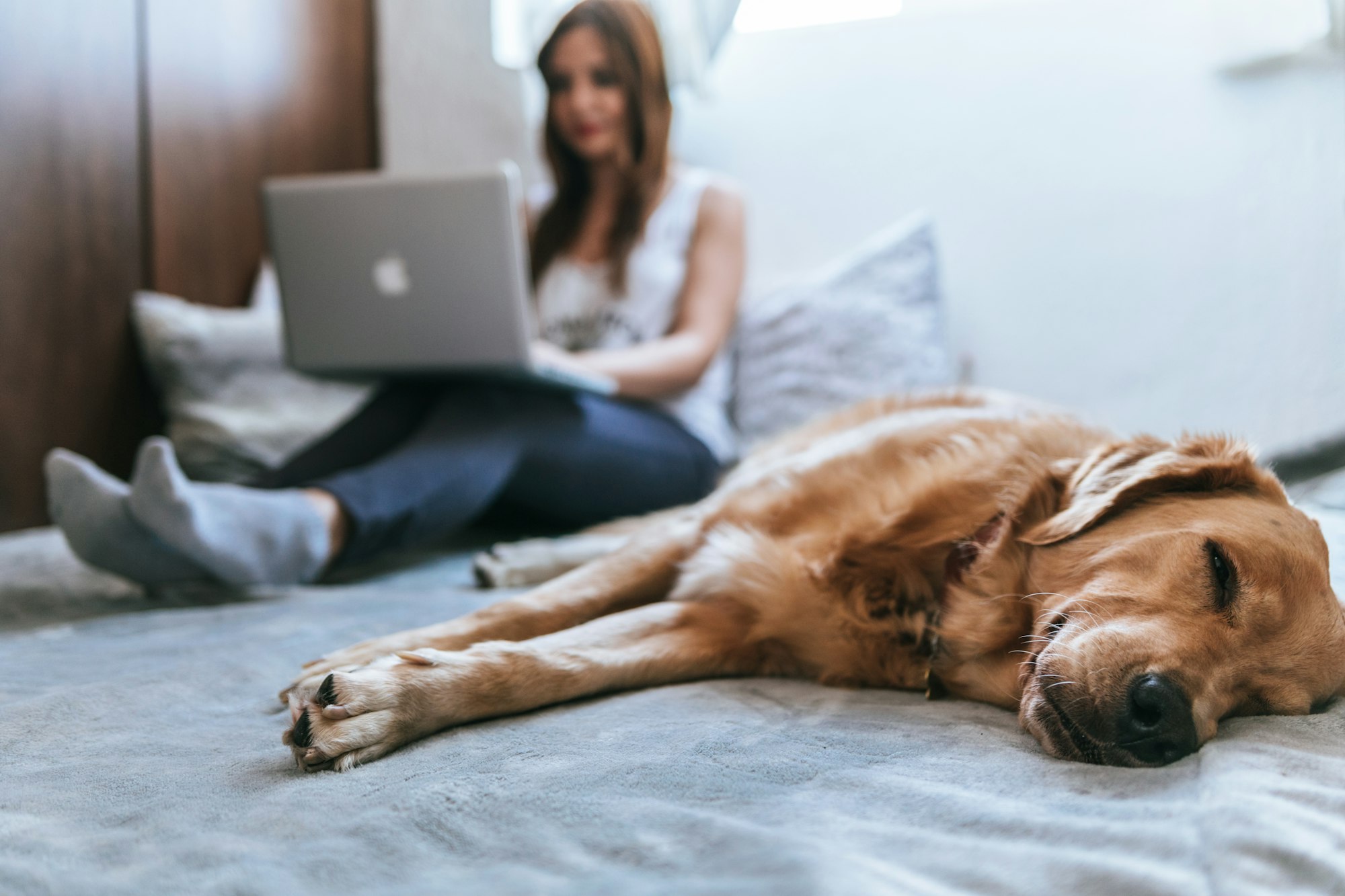Dogs rolling on their toys is a fascinating behavior - one that intrigues many pet owners and animal enthusiasts! It's common to see dogs engaging in this activity. But, why do they do it? Understanding the reasons behind this behavior can offer insights into our furry friends' instincts.
Rolling on toys is a form of self-expression and exploration. Dogs leave their scent behind, marking it as their own territory. This behavior dates back to their wild ancestors who used bodily scents to communicate with other pack members.
Rolling and rubbing against the toy also helps dogs release pent-up energy and relieve stress. It provides them with sensory stimulation and satisfaction. Plus, it's an expression of joy and contentment as they play with their favorite possessions.
Some believe that rolling on toys may also enhance a dog's sense of security and comfort. Dogs create a safe space within their environment by associating their scent with toys. This behavior may have come from the innate instinct of survival when wild canines would roll over decomposed animals or feces to mask their own scent from predators.
According to Dr. Stanley Coren, rolling on toys allows dogs to absorb scents from the environment. This information helps them later on when they encounter other animals or objects.

Why Do Dogs Roll On Their Toys?
Dogs have a habit of rolling on their toys. Why? Instinct and dog communication. It's a form of scent marking, where the scent of the toy sticks to the dog's fur. It's a way to show ownership and mark the toy as part of their territory.
Plus, it's a way to release energy and express joy. Rolling stimulates their senses and allows physical activity. Good for their health.
Rolling can also be a sign of affection. Dogs need companionship and by rolling on their toys, they show love and attachment. So sweet!
Pro Tip: If you see your dog roll on certain toys, clean them regularly to keep them safe and healthy.

The Behavior of Dogs Rolling On Their Toys
Dogs engage in a peculiar behavior of rolling on their toys, which can be attributed to their natural instincts. Rolling on toys allows dogs to spread their scent, marking their territory and claiming ownership. It also serves as a form of play and interaction, as dogs enjoy the tactile sensation and the movement of the toy against their bodies. Additionally, rolling on toys may mimic hunting behaviors, as dogs instinctively roll on prey in order to mask their scent and improve their chances of a successful hunt. This behavior is fascinating and showcases the unique instincts and behaviors of our canine companions.
In exploring this behavior further, it is important to understand that dogs have a keen sense of smell and use it to explore and interact with their environment. Rolling on their toys allows them to leave their scent on the toy, which in turn helps to establish their presence and claim ownership. It also serves as a way for dogs to mark their territory, signaling to other animals that the toy belongs to them. By rolling on the toy, dogs effectively communicate their status and establish boundaries.
Furthermore, rolling on toys can be seen as a playful behavior for dogs. The texture and movement of the toy against their bodies provide sensory stimulation, akin to human enjoyment of a massage or playing with a soft object. Dogs may also roll on their toys as a form of interaction, seeking attention and playtime with their owners. This behavior not only provides physical pleasure but also emotional engagement, reinforcing the bond between dogs and their human companions.
Additionally, rolling on toys can be linked to the hunting instincts of dogs. In the wild, predators often roll on their prey to mask their scent and avoid detection. By rolling on their toys, dogs may exhibit a similar instinctual behavior, ingrained in their DNA. This ancient hunting tactic allows dogs to minimize their own scent and potentially increase their chances of a successful hunt. Even though dogs are domesticated, these behaviors traced back to their ancestors still shape their actions today.
Why do dogs roll on their toys? Because what better way to tell a toy who's boss than a good ol' wrestling match and a victory roll.
The purpose of rolling on toys
Dogs rolling on their toys have a purpose beyond play. It's not just for fun - they do it to satisfy their primal instincts, seek comfort, and even mark their territory!
- Instincts: Rolling serves as a mimic of hunting and protecting their belongings.
- Comfort: Rolling gives them a cozy sensation, like snuggling with a blanket.
- Scent: It intensifies the scent on their toys so they can recognize them.
- Marking: Rolling leaves their scent on the toy as a way of claiming ownership.

Steps to prevent or control the behavior
Dogs have a natural instinct to roll on their toys due to their ancestral behavior. To prevent or control this behavior, follow these steps:
- Introduce various toys: Offer a variety of toys to divert their attention from rolling behavior.
- Positive reinforcement: Reward your dog with treats or praise when they engage in appropriate play behavior with their toys.
- Train with commands: Teach your dog commands like "leave it" or "drop it" to redirect their focus away from rolling and onto other activities.
- Provide mental and physical stimulation: Engage your dog in regular exercise and mental stimulation through interactive games and puzzle toys to reduce the urge to roll excessively.
It's important to note that every dog is unique, so finding the right approach may require some trial and error.
In terms of historical context, dogs have been known to engage in playful behavior with objects for centuries. This behavior is deeply rooted in their instinctual nature and has been observed in various canine species. By understanding their natural tendencies, we can work towards preventing or redirecting this behavior to ensure a happy and well-balanced furry companion.

Providing enough physical and mental stimulation
Struggling to control challenging behavior? An effective approach is giving enough physical and mental stimulation. Activities that exercise the body and mind can help focus attention and reduce unwanted behavior.
Physical stimulation means doing activities that make the body move. This could be walking, running, playing sports - anything that gets the blood pumping! Regular exercise helps to release energy, reduce stress, improve mood, and help sleep. Also, exercising promotes healthy living and can help with weight issues.
Mental stimulation is engaging the mind through activities like puzzles, problem-solving, and learning new skills. This keeps the brain active and reduces boredom or restlessness. It also encourages cognitive abilities and enhances overall functioning.
Different activities should be tailored to individual interests and abilities for maximum stimulation. Outdoor activities like hiking or digging could be good for some. Others may prefer indoor hobbies such as tug of war or playing with toys.
Providing enough physical and mental stimulation can divert attention from challenging behavior. Everyone's needs are unique, so it may take some trial and error to find the right balance of activities.
Choosing appropriate toys for your dog
When selecting toys for your pup, size matters! Choose one that is suitable for your dog's size. For bigger dogs, small toys could be a choking hazard, and bigger ones could be too challenging for smaller breeds. Additionally, make sure the material is durable and non-toxic, steering clear of toys with small parts or those that easily break apart.
Toys with interactive features, like squeaking sounds or treats hidden inside, are great for engaging your pup's senses and mental stimulation. Take into account your pup's play style and preferences, too. Fetching, tug-of-war, and chew toys are all good options.
Rotate your pup's toys regularly to keep them engaged and monitor playtime for potential safety issues. Each pup is unique - observe their reactions and find what brings them joy. This way, you can create an enjoyable playtime experience specifically tailored to their needs.
Remember, by selecting the right toys for your beloved pet, you can enhance their overall happiness and wellbeing, keeping them entertained throughout the day.
Teaching alternative behaviors
To help individuals make positive changes in their lives, teaching alternative behaviors is key. Research conducted by the American Psychological Association has proven this to be a highly effective strategy in behavior modification. To make this possible, it's important to:
- Encourage self-reflection. Help people recognize their negative patterns by being self-aware and reflective.
- Identify triggers. Assist in finding the circumstances that lead to bad behavior. This enables people to proactively manage or avoid them.
- Create a safe environment. Establish a supportive and non-judgmental atmosphere where individuals can express themselves without fear of criticism.
- Provide role models. Introduce positive models who demonstrate desirable behaviors. This can motivate individuals to act and think similarly.
- Offer guidance and feedback. Give clear directions on how to engage appropriately. Regular feedback helps people understand where they're at and where they need to improve.
- Promote alternative outlets. Urge individuals to channel their energy into constructive activities such as sports, art, or volunteering. This gives them a chance to develop and grow.

Conclusion
Why do dogs roll on their toys? Instinctual nature and natural instincts are to blame. Dogs have a desire to mark their territory with scent, and rolling on toys lets them do this.
To understand why this behavior happens, we must look back at a dog's ancestor - the wolf. Wolves in the wild roll on decomposing carcasses or other objects to claim ownership and hide their scent from predators/competitors. Domesticated dogs still have these wild instincts, leading them to act the same way.
Rolling on toys leaves behind scent and marks the toy as theirs. This behavior might stem from a mix of an instinctual need to be dominant and an inherent playfulness.
Dog owners should understand that rolling on toys is a normal behavior for our furry friends. Instead of discouraging it, give pets a variety of safe and entertaining toys that cater to their needs.
The next time you see your pup rolling on its favorite thing, remember that it's just being true to itself. Encourage and embrace this behavior, for it shows your pet's personality and meets its needs. Understanding our companions' actions helps us build better relationships and make sure they live happy lives.
Frequently Asked Questions
Q: Why do dogs roll on their toys?
A: Dogs often roll on their toys as a way to mark them with their scent. This behavior is instinctual and helps them claim ownership over their belongings.
Q: Is rolling on toys a form of play for dogs?
A: Rolling on toys can be a form of play for some dogs. It allows them to engage with their toys in a different way and can provide mental and physical stimulation.
Q: Can rolling on toys indicate that a dog is happy?
A: Yes, rolling on toys can be a sign of a happy dog. It shows that they are comfortable and content in their environment, and enjoying their playtime.
Q: Do all dogs roll on their toys?
A: Not all dogs roll on their toys, as individual behavior can vary. Some dogs may prefer other ways to play or interact with their toys.
Q: Are there any other reasons why dogs roll on their toys?
A: Dogs may also roll on their toys to alleviate any itching or irritation on their skin. Rolling can provide them with temporary relief and help scratch those hard-to-reach spots.
Q: Should I be concerned if my dog rolls on their toys excessively?
A: Excessive rolling on toys may indicate an underlying issue, such as allergies or skin irritation. It is best to monitor your dog's behavior and consult with a veterinarian if you have any concerns.






